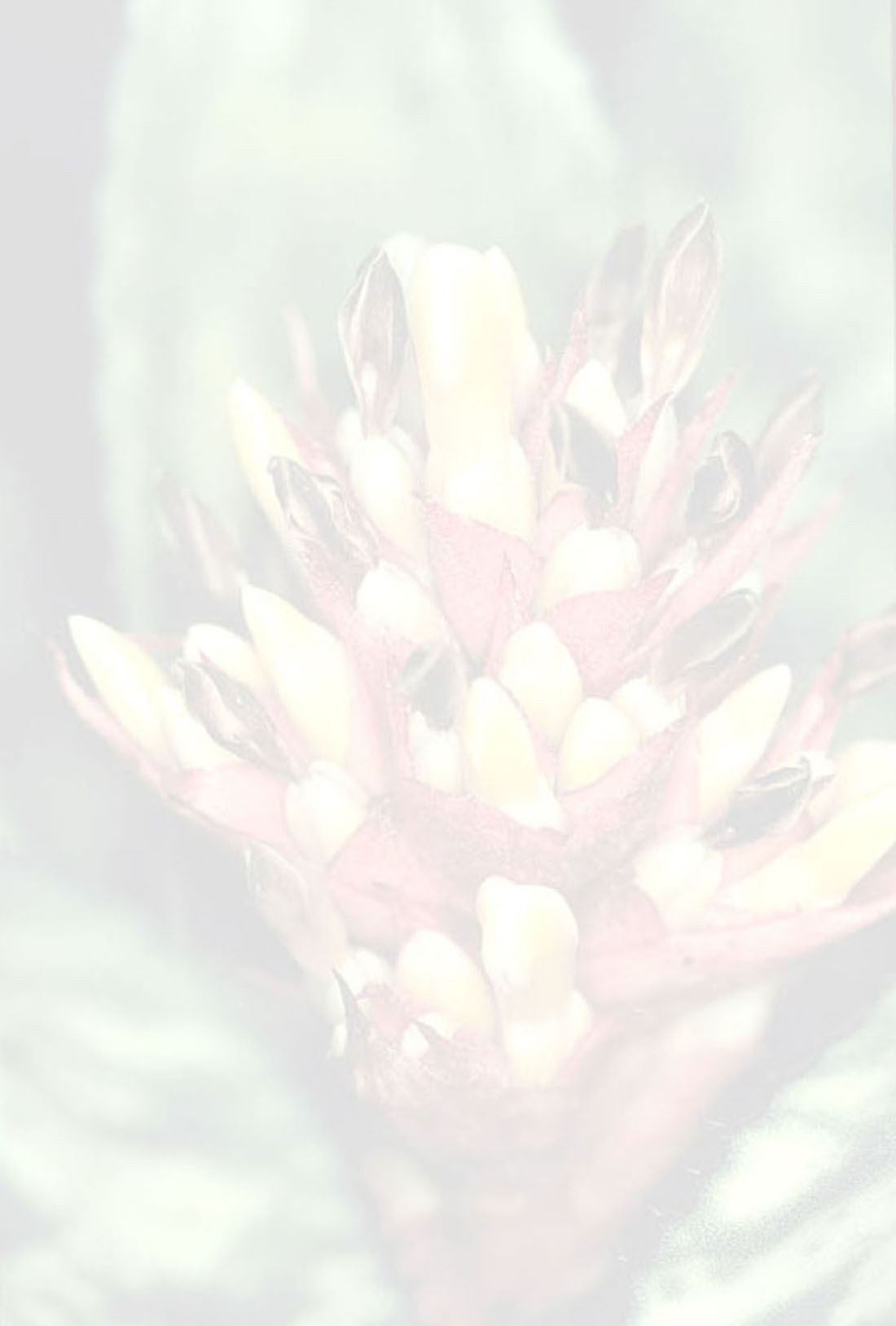


plant flowering 40 cm high. leaves more than 20 in a dense rosette, not utriculate; sheath strongly appressed, broadly triangular, 15 mm wide near base, white-lepidote beneath, glabrous above, many-nerved; blade 40 cm long, strongly secund and deflexed, 5–8 mm wide at base, attenuate to an acicular apex, white-lepidote beneath, glabrous above, the lowest third densely and minutely spinose, gradually reduced above and entire near apex, the spines not over 0.5 mm long, hyaline or green, irregular, retrorse, straight, or antrorse, inner blades smaller, red, the others dark green. inflorescence: peduncle very short; fertile part nidular, simple, spicate, densely ellipsoid, ca 10 flowered; floral bracts lance-ovate, acuminate, many-nerved, purple and white-lepidote beneath, 35–40 mm long, 15 mm wide, equaling or exceeding the flowers, slightly indurated at apex. flowers 35 mm long, sessile, cleistogamous; sepals asymmetric, 6 mm long without the 2 mm mucro, obtusely carinate, purple, white-lepidote becoming glabrous; petals spatulate, rounded-emarginate, cymbiform, remaining closed, white below, pale lilac above, bearing 2 fimbriate scales at base and 2 calli above them. stamens included, series i adnate on the petals to above the calli, series ii free; anther linear, 6 mm long; pollen biporate. pistil: ovary 10 mm long, subtrigonous, epigynous tube sub cylindric, 3 mm long; placenta subapical; ovules few.Edited from (19-04-2013): Smith & Downs 1979. Bromelioideae (Bromeliaceae) in Flora Neotropica.